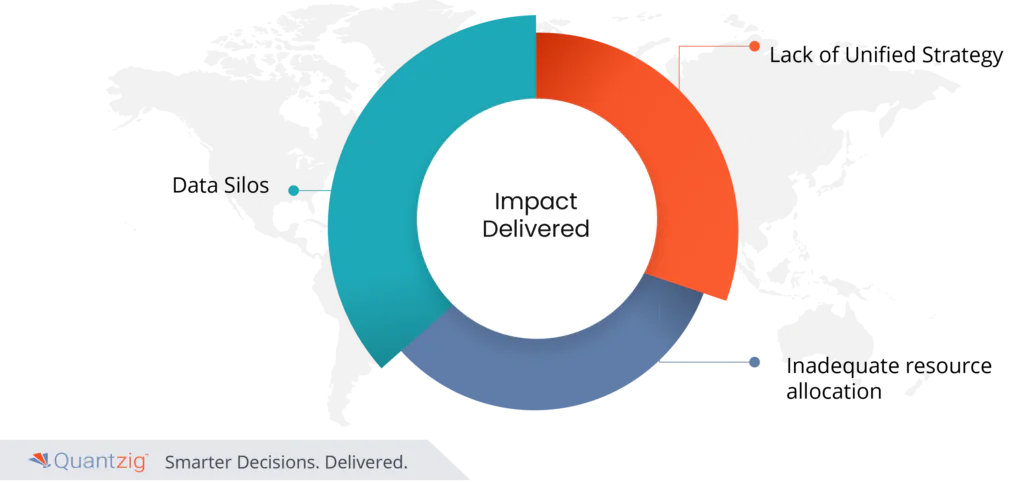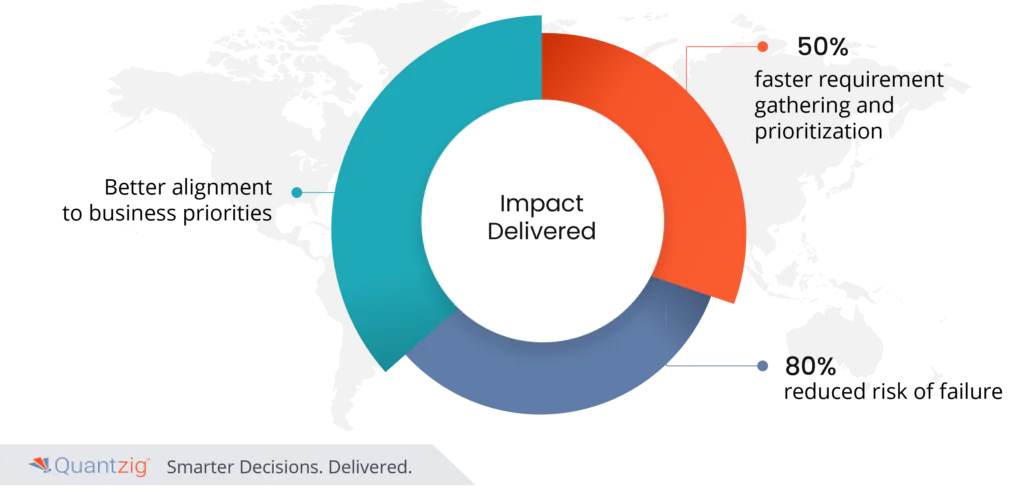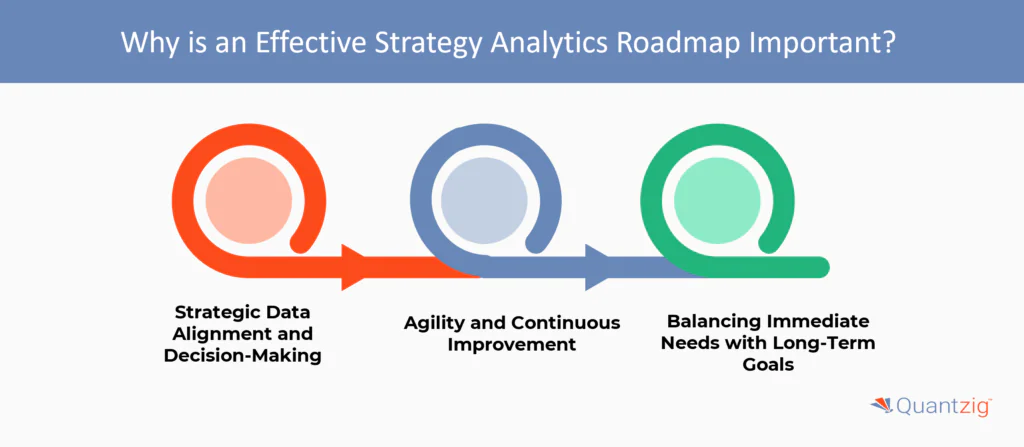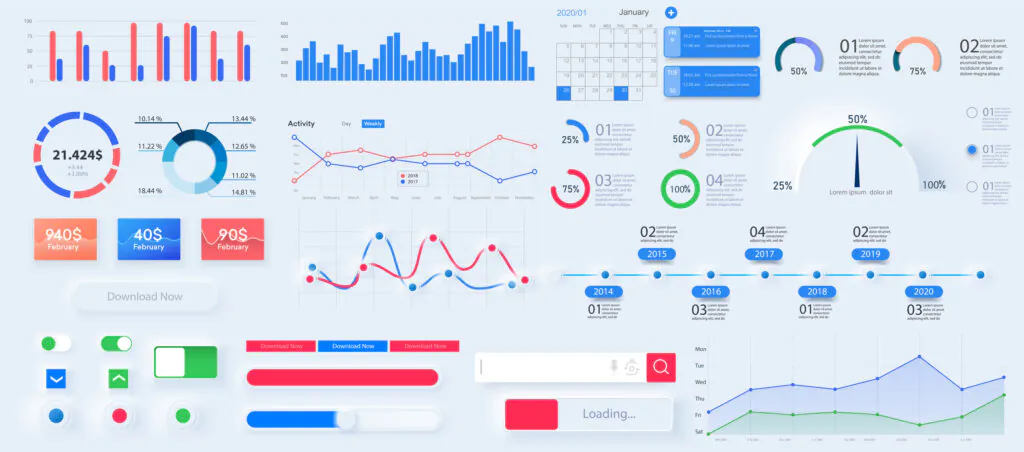Written By: Sudeshna Ghosh
Table of Contents
Introduction to Analytics Roadmap
Data has significantly become the fuel that drives success and separates leaders from their followers. Nowadays, enterprises strive to navigate this data-driven era, and therefore, developing an effective roadmap planning has emerged as a critical undertaking. To get the maximum benefits from data, businesses can focus on making a modern analytics system that prioritizes both their employees’ skills and technology.
This competitive article presents a guide on developing a roadmap strategy that not only aligns with your enterprise’s objectives but also maximizes the value extracted from data. With a focus on proven methodologies, cutting-edge technologies, and a step-by-step approach, this resource empowers you to develop a highly effective business intelligence strategy and analytics roadmap, outpace your competitors, and forge a path toward data-driven excellence.
Book a demo to experience the meaningful insights we derive from data through our analytical tools and platform capabilities. Schedule a demo today!
Request a Free DemoHow Quantzig Empowered a US Retail Giant with an Effective Analytics Roadmap
| Category | Details |
|---|---|
| Client Details | A leading global retailer in the US retail sector, renowned for its diverse product portfolio and widespread presence. |
| Challenges Faced by The Client | -Data Silos -Lack of Unified Strategy -Inadequate Resource Allocation |
| Solutions Offered by Quantzig | Quantzig assisted the client by implementing a Gap Based roadmap discovery process and data integration strategy, optimizing productivity, enhancing data monetization, and streamlining operations for sustained growth and market advantage. |
| Impact Delivered | -Better alignment to business priorities -50% faster requirement gathering and prioritization -80% reduced risk of failure |
Client Details:
We recently engaged with a client who is a leading global retailer in the US retail sector, renowned for its diverse product portfolio and widespread presence. Despite their established market position, they faced challenges in optimizing their data-driven decision-making processes.
Challenges Faced by the Client:

- Data Silos: The client grappled with data silos across multiple departments, impeding the seamless flow of information and causing inconsistencies in analytics outputs.
- Lack of Unified Strategy: The absence of a cohesive analytics strategy hindered the client’s ability to leverage data insights for strategic decision-making.
- Inadequate Resource Allocation: Inadequate resource allocation and suboptimal technology deployment impacted the scalability and performance of their analytics infrastructure.
Solutions Offered by Quantzig:
- At first, we implemented the Gap Based roadmap discovery process for the client which proved immensely beneficial for them. Through this data strategy and roadmap approach, we thoroughly assessed their current productivity benchmarks and identified areas for improvement. By leveraging data monetization opportunities, we unearthed untapped potential for generating revenue and optimizing their data assets. This process provided the client with a comprehensive roadmap, offering actionable and clear steps to enhance productivity, capitalize on data monetization, and achieve their business objectives effectively. As a result, the client experienced heightened efficiency, increased revenue streams, and a strategic advantage in the market, positioning them for sustained growth and success in their industry.
- We formulated a data integration roadmap that outlined clear milestones and actionable steps to achieve their product goals efficiently. The refinement process allowed us to fine-tune the project scope, optimizing resources, and business timelines. Through blueprinting, our team meticulously planned the product architecture, ensuring future expansion and scalability. MVP design and development helped our client to gather user feedback, validate their product data, and make a business model roadmap, ultimately resulting in heightened customer satisfaction and productivity. Besides, our data scale efficiency discovery consulting prototype helped their company to reduce data processing time and costs, optimize their operations, and increase productivity. The client was able to analyze large datasets seamlessly which led to faster decision-making.
Impact Delivered from Quantzig’s Effective Analytics Roadmap:

- Better alignment to business priorities
- 50% faster requirement gathering and prioritization
- 80% reduced risk of failure
Get started with your complimentary trial today and delve into our platform without any obligations. Explore our wide range of customized, consumption driven analytical solutions services built across the analytical maturity levels.
Start your Free Trial todayWhy is an Effective Strategy Analytics Roadmap Important?

1. Strategic Data Alignment and Decision-Making
The ability to plan an analytics roadmap effectively is a critical success factor in today’s business environment, with the power to completely reinterpret what success means. A well-designed business analytics roadmap emerges as the compass that guides businesses as they navigate the complexities of a data-driven world. This careful data analytics roadmap shows the way to excellence by utilizing a wealth of data and coordinating it with strategic goals. Businesses can obtain a thorough grasp of their markets, customers, and operations by utilizing road map planning and data-driven insights. As a result, they are better equipped to allocate resources effectively, make well-informed decisions with increased precision, and change course quickly in response to changing needs.
2. Agility and Continuous Improvement
An effective analytics roadmap empowers enterprises to adopt a “fail fast, fix fast” approach, mitigating risks and maximizing returns. By meticulously charting a strategic course, your business can swiftly experiment with data-driven initiatives, identifying what works and what doesn’t. This agility minimizes large sunk costs associated with lengthy, misguided implementation. Instead, the data analytics roadmap fosters a culture of continuous improvement, enabling rapid adjustments and course corrections. Through iterative iterations, enterprises can optimize their analytics initiatives, ensuring resources are wisely invested and aligned with business goals.
3. Balancing Immediate Needs with Long-Term Goals
A balance between establishing an effective analytics data setup and addressing urgent business needs is pivotal in gaining the right budgetary support and scaling your roadmap with utmost efficacy. By focusing on immediate requirements while laying a robust data foundation, enterprises gain the trust of stakeholders and secure the necessary resources for analytics initiatives. This balanced approach enables strategic decision-making, optimized resource allocation, and a seamless alignment between long-term objectives and short-term goals. As a result, enterprises can accelerate their data strategy roadmap, swiftly adapting to changing market demands, unlocking growth opportunities, and ultimately gaining a competitive edge in the data-driven landscape.
Benefits of Implementing an Effective Analytics Roadmap

1. Tailored Analytics Solutions
An effective analytics roadmap empowers businesses to choose from ala-carte analytics options based on their analytics maturity level. By assessing their current analytical capabilities and identifying areas for improvement, organizations can strategically prioritize analytics initiatives. This approach allows them to invest in solutions that align with their specific needs, resources, and long-term goals. For businesses in the early stages of analytics maturity, foundational tools like data visualization and basic reporting may be the focus, while more advanced organizations can explore AI-driven analytics, machine learning, and predictive modeling. The flexibility of ala-carte options enables businesses to tailor their analytics journey, ensuring a cost-effective and target approach that maximizes the value extracted from the data, propelling them toward data-driven success.
2. Structured Data Analysis for Informed Decision-Making
A data analysis roadmap outlines a strategic plan to collect, process, and analyze data in a structured manner. By following a data visualization roadmap, organizations can make informed decisions based on evidence and insights rather than relying solely on intuition or gut feelings. This approach ensures that resources are directed towards initiatives with the highest potential for success, leading to improved efficiency, reduced risks, and better overall outcomes.
3. Competitive Advantage Through In-depth Insights
A well-executed data strategy roadmap enables organizations to gain a deeper understanding of their operations, market trends, and customers. Armed with this knowledge, they can identify growth opportunities, optimize processes, and proactively respond to changing market dynamics. Consequently, companies can gain a competitive edge by offering tailored products and services, creating personalized customer experiences, and staying ahead of their rivals in the ever-evolving business landscape.
Best Practices for Crafting Impactful Data Analytics Roadmaps

Crafting impactful data analytics roadmaps involves a strategic approach to harness the full potential of data for informed decision-making. Key best practices include:
- Define Clear Objectives: Clearly articulate the objectives and goals of your data analytics strategy roadmap to align with overall business objectives.
- Stakeholder Collaboration: Involve key stakeholders from various departments to ensure a comprehensive understanding of business needs and challenges.
- Comprehensive Data Assessment: Conduct a thorough assessment of available data, ensuring its quality, relevance, and compatibility with analytics tools.
- Technology Stack Alignment: Align the chosen technology stack with organizational needs, considering scalability, compatibility, and ease of integration.
- Skill Development: Invest in developing the necessary skills within your team, bridging the gap between IT and analytics for seamless execution.
- Iterative Approach: Adopt an iterative approach to roadmap development, allowing for adjustments based on evolving business needs and technological advancements.
- Governance Framework: Establish a robust data governance framework to ensure data quality, security, and compliance with industry regulations.
- Change Management: Implement effective change management strategies to address resistance and promote a culture of data-driven decision-making.
By adhering to these best practices, organizations can develop data analytics roadmaps that not only address existing challenges but also position them to leverage data as a strategic asset for future growth.
Challenges/Problems Faced while Implementing an Effective Analytics Roadmap
Implementing a robust analytics roadmap often encounters challenges, particularly when primarily driven from an infrastructure and IT standpoint. These challenges can result in delays in achieving a fully functional end-to-end data setup. Key issues include:
- Data Silos: Existing data silos hinder seamless data integration, impeding comprehensive analysis and decision-making processes.
- Scalability Concerns: Inadequate infrastructure may struggle to handle growing data volumes and evolving analytics requirements.
- Lack of Governance: Insufficient data governance frameworks can lead to data quality issues, impacting the credibility of analytical insights.
- Skill Gaps: A shortage of skilled personnel proficient in both analytics and IT can hinder effective execution.
- Cost Overruns: Underestimating infrastructure and resource costs may lead to budgetary constraints.
- Integration Complexity: Complexity in integrating diverse data sources can impede the development of a cohesive analytics strategy.
- Data Security Concerns: Ensuring data security and compliance with regulations poses a continuous challenge in analytics implementations.
- Technology Stack Compatibility: Compatibility issues within the chosen technology stack may hinder smooth execution.
- Change Management: Resistance to change within the organization can pose a barrier to the successful adoption of analytics-driven strategies.
Addressing these challenges requires a holistic approach, emphasizing strategic planning, skill development, and a commitment to overcoming barriers to successful analytics implementation. This comprehensive strategy is crucial for organizations aiming to harness the full potential of data analytics in driving informed decision-making.
Framework to Develop an Effective Analytics Roadmap

Developing an effective data analytics roadmap requires a structured framework to ensure alignment with organizational goals and successful implementation. Here’s a concise guide:
1. Assess Business Objectives: Begin by understanding the overarching business objectives to tailor the roadmap accordingly. This sets the foundation for a strategy that aligns with organizational goals.
2. Stakeholder Engagement: Involve key stakeholders across departments to gather diverse perspectives and insights. This collaborative approach fosters a comprehensive understanding of business needs.
3. Data Inventory and Quality Check: Conduct a thorough inventory of available data, evaluating its quality, relevance, and completeness. Addressing data quality issues at this stage is crucial for accurate analytics.
4. Technology Alignment: Choose analytics tools and technologies that align with the organization’s infrastructure and scalability requirements. Ensure compatibility and integration capabilities with existing systems.
5. Skill Development: Identify and address skill gaps within the team. Provide training programs to enhance expertise in both analytics and IT, facilitating a seamless execution of the roadmap.
6. Roadmap Iterations: Develop the roadmap in iterative stages, allowing for flexibility and adjustments based on evolving business needs, emerging technologies, and industry trends.
7. Governance and Compliance: Establish a robust governance framework to ensure data security, compliance with regulations, and ethical use of data throughout the analytics process.
8. Communication Strategy: Develop a clear communication plan to articulate the roadmap’s value proposition, milestones, and expected outcomes to all stakeholders, fostering organizational buy-in.
By following this framework, organizations can craft a data analytics roadmap that not only addresses current challenges but also lays the groundwork for a data-driven future.
Conclusion:
In conclusion, building an effective analytics roadmap is paramount for enterprises aiming to thrive in today’s data-driven landscape. By carefully strategizing the collection, processing, and analysis of data, organizations can enable data-driven decision-making, fostering efficiency, and risk reduction. Additionally, a data strategy roadmap empowers enterprises to gain a competitive advantage by understanding their operations, customers, and market trends comprehensively. With a well-crafted predictive analytics roadmap in place, enterprises can navigate complexities with confidence, unlocking opportunities for success and growth.



